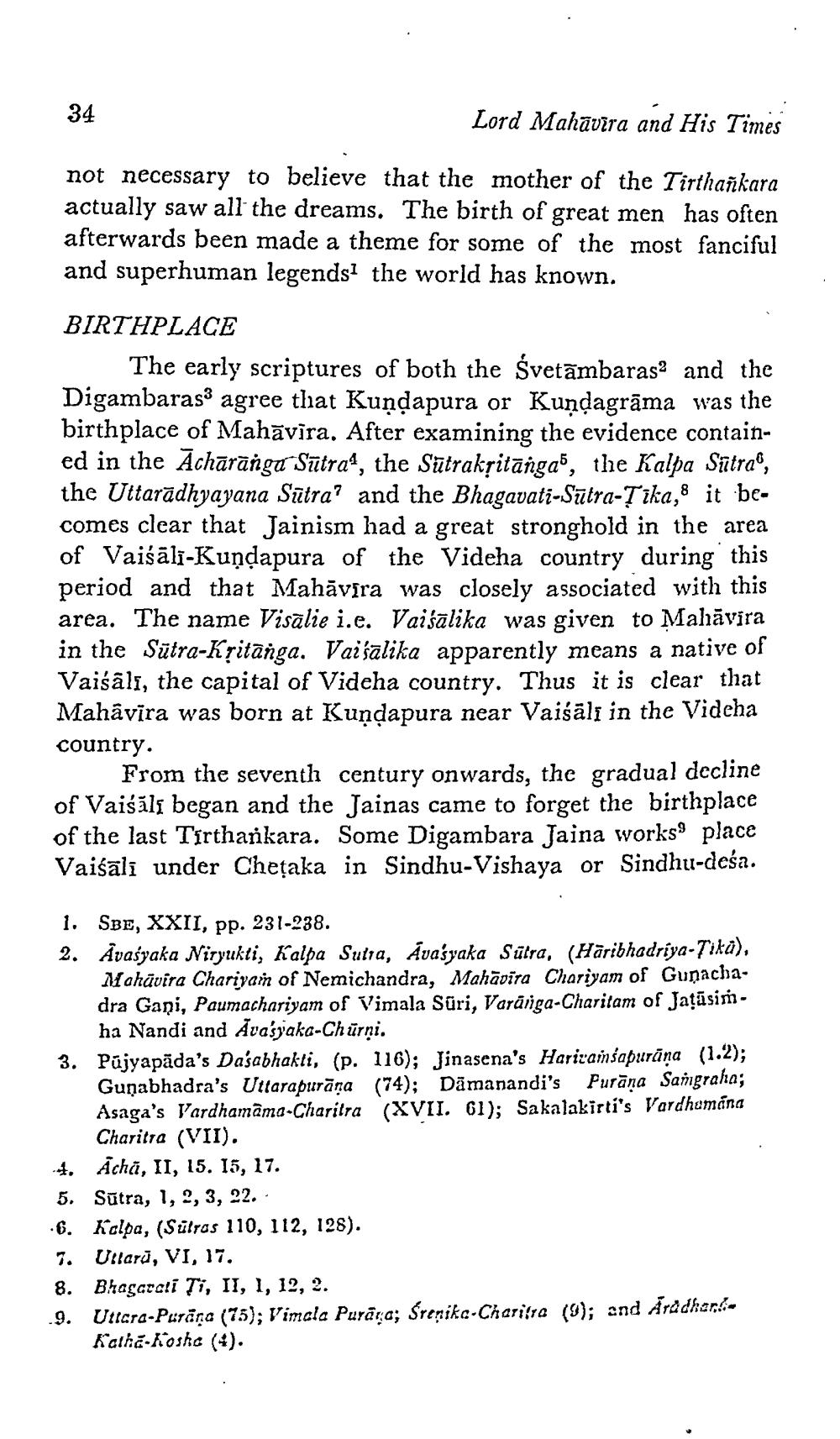________________
Lord Mahavira and His Times
not necessary to believe that the mother of the Tirthankara actually saw all the dreams. The birth of great men has often afterwards been made a theme for some of the most fanciful and superhuman legends1 the world has known.
34
BIRTHPLACE
8
The early scriptures of both the Svetambaras2 and the Digambaras3 agree that Kundapura or Kundagrāma was the birthplace of Mahāvīra. After examining the evidence contained in the Acharanga Sutra1, the Sutrakṛitanga, the Kalpa Sutra, the Uttaradhyayana Sutra and the Bhagavati-Sutra-Țika, it becomes clear that Jainism had a great stronghold in the area of Vaisali-Kundapura of the Videha country during this period and that Mahavira was closely associated with this area. The name Visālie i.e. Vaišālika was given to Mahāvira in the Sutra-Kritanga. Vaisalika apparently means a native of Vaiśāli, the capital of Videha country. Thus it is clear that Mahavira was born at Kundapura near Vaiśālī in the Videha
country.
From the seventh century onwards, the gradual decline of Vaiśāli began and the Jainas came to forget the birthplace of the last Tirthankara. Some Digambara Jaina works place Vaiśālī under Cheṭaka in Sindhu-Vishaya or Sindhu-deśa.
1. SBE, XXII, pp. 231-238.
2. Avasyaka Niryukti, Kalpa Sutra, Avasyaka Sūtra, (Hāribhadriya-Tikā), Mahavira Chariyam of Nemichandra, Mahavira Chariyam of Gunachadra Gani, Paumachariyam of Vimala Sūri, Varanga-Charitam of Jaṭāsimha Nandi and Ava'sjaka-Churni.
3. Pujyapada's Dasabhakti, (p. 116); Jinasena's Harivamsapurāna (1.2); Gunabhadra's Uttarapurana (74); Damanandi's Purana Samgraha; Asaga's Vardhamama-Charitra (XVII. 61); Sakalakirti's Vardhumána Charitra (VII).
4. Acha, II, 15. 15, 17.
5. Sutra, 1, 2, 3, 22. H
6. Kalpa, (Sutras 110, 112, 128).
7. Uttard, VI, 17.
8. Bhagavati Ti, II, 1, 12, 2.
9. Uttara-Purana (75); Vimala Purāṇa; Śreņika-Charitra (9); and ÁrådhenkKatha-Kosha (4).




